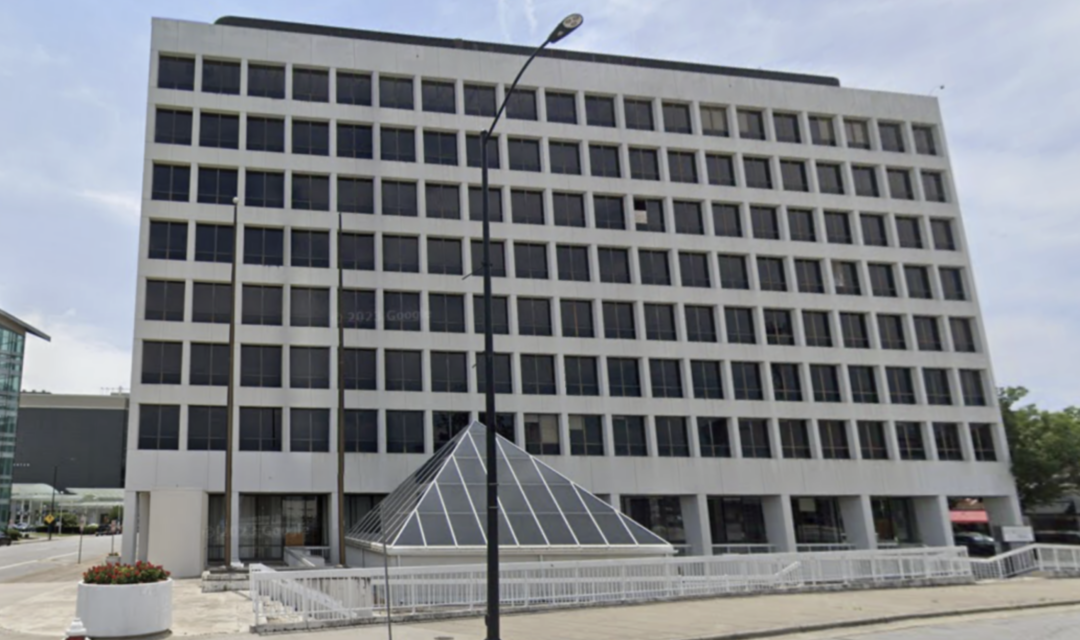The city of High Point and developers in that city have proven to be very good in recent years when it comes to taking old buildings and property, renovating and repurposing them – and the city is sticking with the same playbook in 2025.
On Wednesday, Feb. 12, the economic development group Downtown High Point announced that a Virginia-based historic rehab development team has been selected to revitalize Showplace West/One Plaza Center in High Point.
It is North Carolina’s first National Register-listed building from the 1970s.
The joint venture between Echelon Resources Inc. and LBD Investments will be their sixth project working together. This new project is expected to become “another catalyst for additional investment in the area and bring 365-day life to our historic downtown,” according to economic development officials in the city.
“This is a major step forward in activating Showplace West,” said Alex Moore, board chair of Downtown High Point. “While there is a lot of work ahead, we are excited about the progress which is a direct result of the desire and relentless effort of our community leaders to transform High Points City Core.”
Showplace West/One Plaza Center will be redeveloped as market-rate apartment housing with roughly 9,000 square feet of commercial space on Wrenn Street and Main Street.
Rebekah Cansler, the president and CEO of Downtown High Point, said she’s very pleased with the coming collaboration.
“I am thrilled to be a part of this project,” she said. “This building has such history. It seems like every local has some story that involves this building. This project represents our first large-scale housing project downtown and it is a significant investment in our city’s future.”
Showplace West/One Plaza Center is the first multi-tenant office building that became eligible for Historic Mill Credits – due to the manufacturing headquarters that were once housed in the building.
This site is also recognized as a Guilford County landmark.
Edwin Gaskin with Echelon said this week, “We are thrilled to redevelop such an iconic building in downtown High Point, which has had many important chapters in its history. Our task now is to save it from its current state and ensure its relevance to future generations. The upscale apartments and commercial spaces we have planned will be a beacon for discerning residents and business owners seeking to be part of the exciting downtown revitalization story. We thank both City and DHP leadership who have shepherded this opportunity through many challenges to get to this project launch.”
In November of last year, the North Carolina Department of Natural and Cultural Resources State Historic Preservation Office issued an eligibility certification for Showplace West/One Plaza Center.
In that announcement late last year, city leaders called the recognition “a significant step toward leveraging the North Carolina Historic Mill Rehabilitation Tax Credit for the adaptive reuse of this historic building.”
In April of 2024, the building at 101 S. Main St. in High Point was awarded an individual listing on the National Register of Historic Places.
That designation recognized the building’s historical importance and architectural significance. It was the very first 1970s building in the state of North Carolina to receive this designation – which allows the renovation efforts to receive historic tax credits, as long, that is, as the designs adhere to the Secretary of Interior’s Standards for Rehabilitation.
The North Carolina Historic Mill Eligibility decision last year focused largely on One Plaza’s Center’s role in the growth of High Point’s world-famous furniture manufacturing industry over the decades. The site was once home to the headquarters of Culp Inc. and LADD Furniture Inc. It has also served as a furniture showroom, and the building played a pivotal role in the manufacturing history of High Point and the surrounding area.
A federal income tax credit for the rehabilitation of historic structures was introduced in 1976 and today it consists of a 20 percent credit for the qualified rehabilitation of income-producing historic properties. Years later, in 1998, North Carolina introduced a state historic tax credit to augment the federal program, and instituted a “non-income-producing” historic tax credit program available to homeowners.


How about a NC base company to do the development?
Another furniture related boondoggle. Furniture is imported these days, fewer and fewer distributors of these goods will commit to long term leases of space., and apartments in downtown High Point,? Mark my words, they’ll be section eight housing within the next decade.
That is what it is, in disguise.